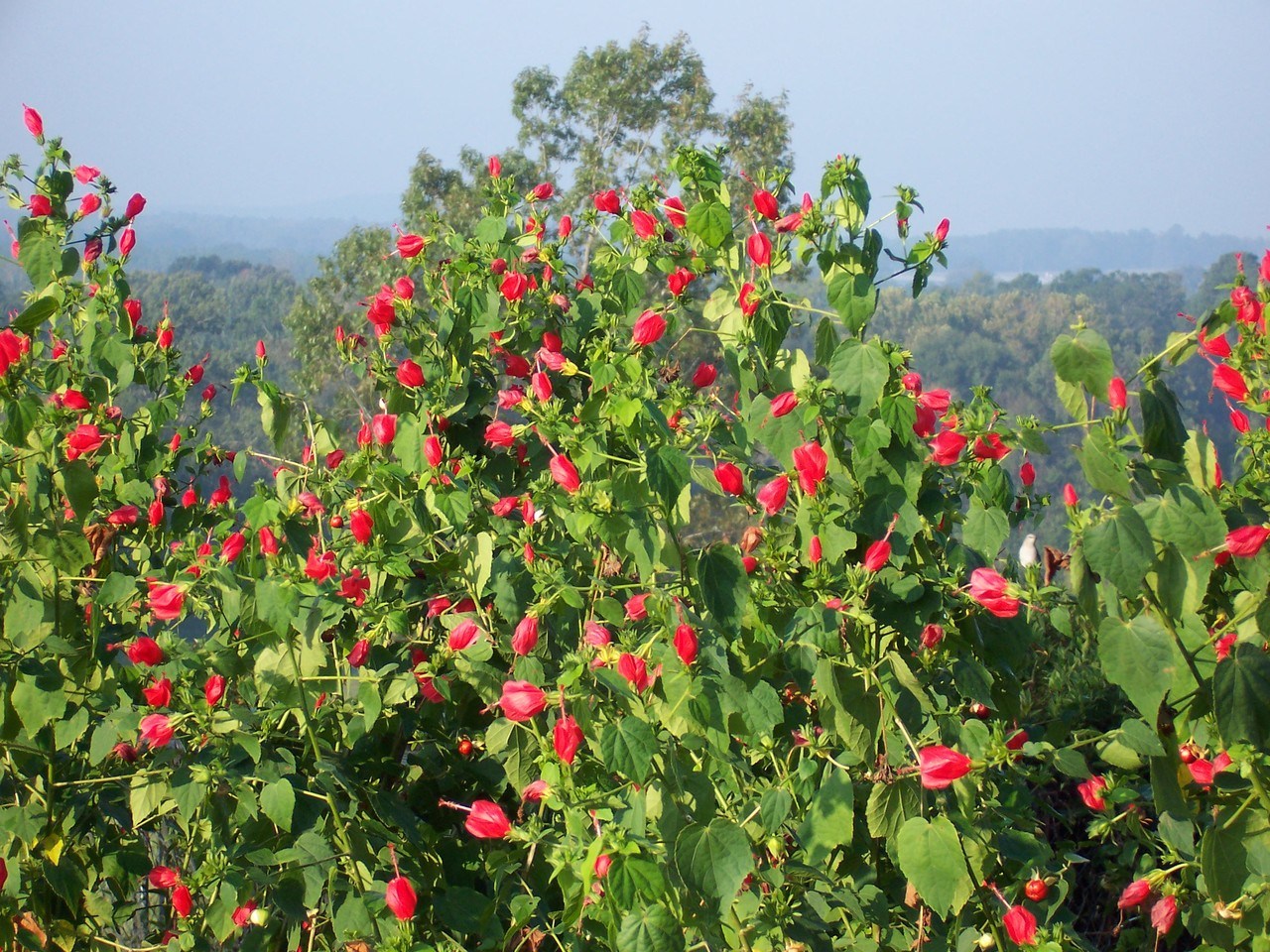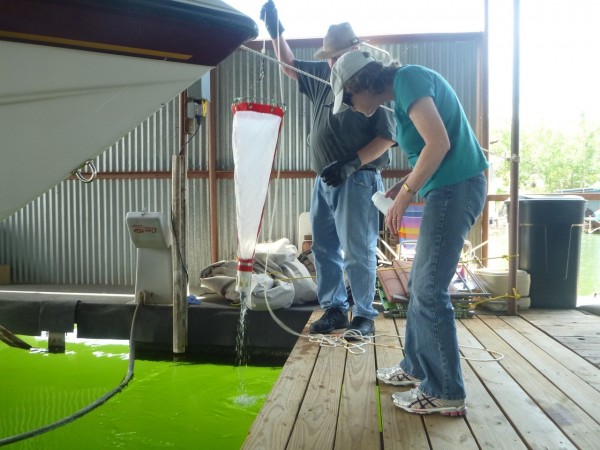
TRWD has been monitoring for the presence of zebra mussels in all of the reservoirs in the system since spring 2013. Efforts have been complimented by Dr. Bob McMahon of UTA under contracts from Texas Parks & Wildlife. Monitoring for adults includes casual observation of rocks at boat ramps and underside of buoys and anchor cables. Monitoring also includes veliger collection with vertical tows of a plankton net and microscopic examination with a Polaroid filter. Vertical tows are typically done just in the spring and fall when water temperatures are around 20°C. Tows have been the best way to detect an infestation and to monitor a population as often the adults attach in very deep water, too deep for casual collection or observation.
Veligers were first found in Lake Bridgeport in spring 2013. Currently, the population is thriving. A similar population is developing in the next downstream reservoir on the West Fork of the Trinity, Eagle Mountain Lake. Veligers were first found there in May 2016. Subsequently a few adults were found in June 2016 and then numerous veligers in the Spring of 2017. It is purely speculation but the introduction of zebra mussels to Bridgeport was probably from boats trailered over from Lake Texoma or Ray Roberts. Both lakes have had large populations of zebra mussels and are in the general vicinity. The downstream spread of the zebra mussels was primarily from the release of the veligers during the big floods of 2015.
Water quality changes in the reservoirs are not apparent at this time. Lake Bridgeport is currently very clear (secchi depths > 4 feet) but this reservoir has a history of being clear when it is full and inflows are minimal. Time will tell if the zebra mussel will affect the phytoplankton populations. We have a great database of Chl’a’ measurements to plot simultaneously with veliger density.
In the meantime, Engineering has concerns over the affect the zebra mussels could have on our ability to pump water. We recently initiated at study with TCU to look at zebra mussel survival and growth in various water qualities found in TRWD reservoirs. Dr. Mike Misamore is orchestrating a laboratory study of zebra mussel vitality in waters from Lake Bridgeport, Richland-Chambers, Cedar Creek and Palestine. While we know the zebra mussels do well in Lake Bridgeport, literature says the low calcium concentrations in Cedar Creek and Palestine should inhibit their presence, or at least this growth and ability to reproduce. However, we have all been amazed at how adaptable these organisms are.
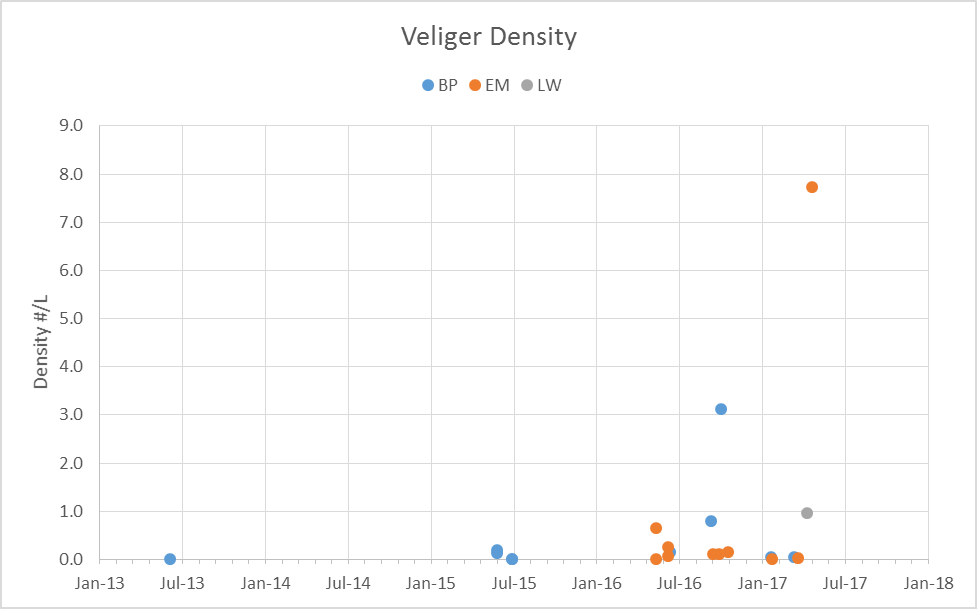
Pictured above: Veliger density from vertical tows at Bridgeport, Eagle Mountain and Lake Worth.
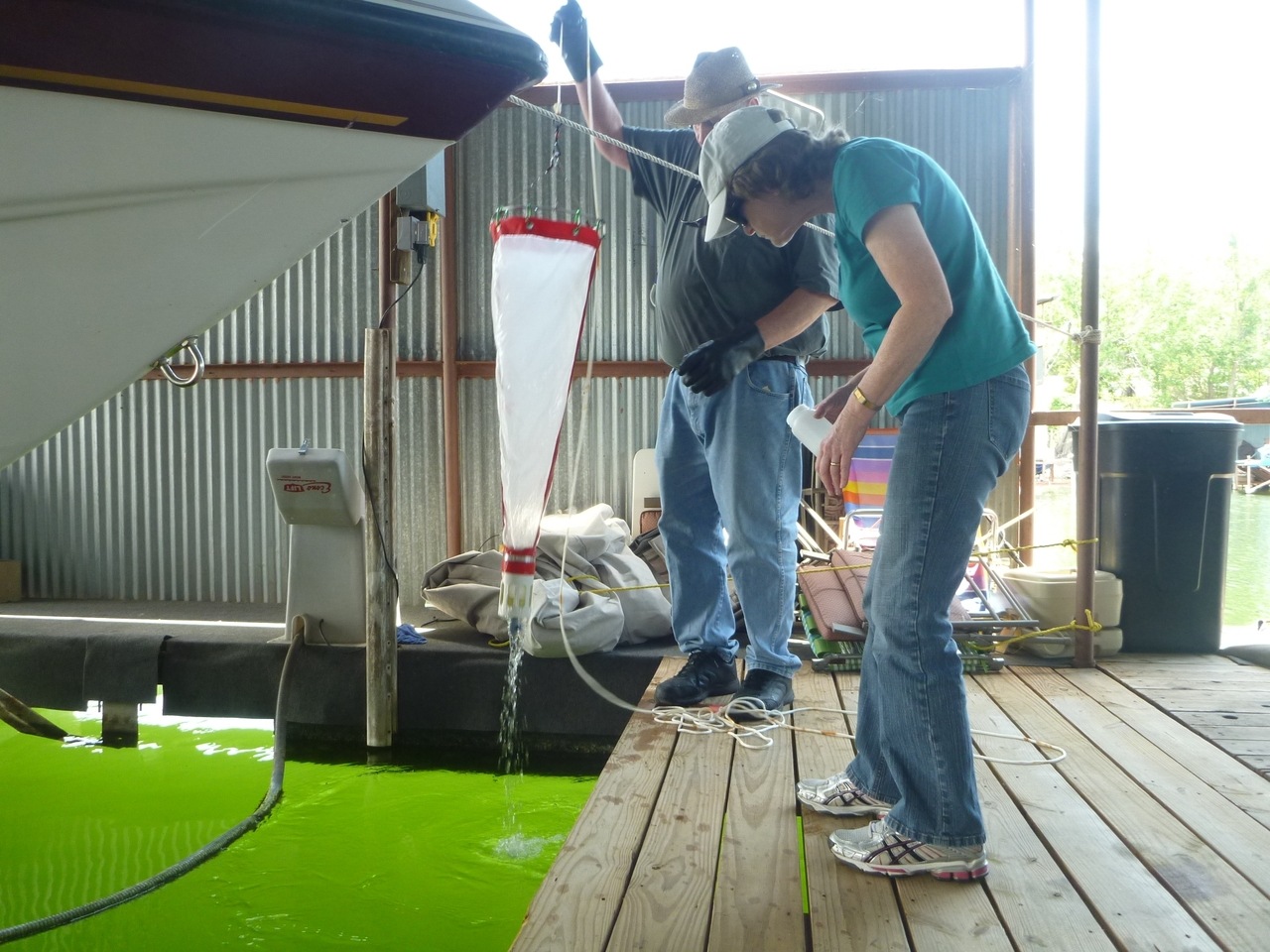
Pictured above: A plankton net being used at a boat slip in deep water.

Pictured above: Zebra Mussel net used to catch veligers.
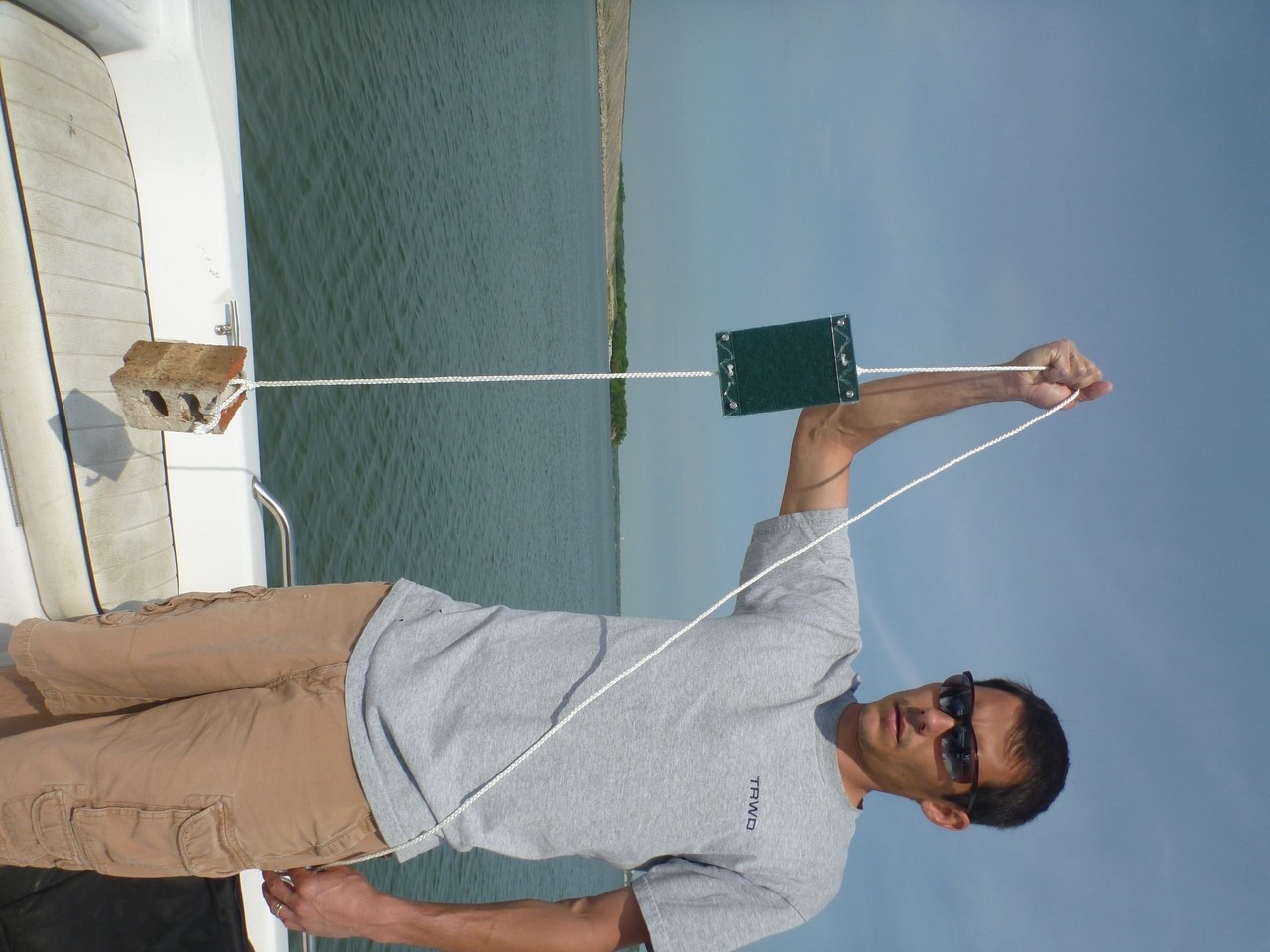
Pictured Above: A settlement sampler that can be suspended from a buoy line or dock. The veligers will settle on the scrub pad and brick.

